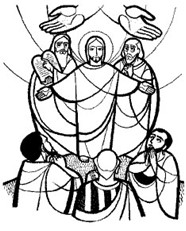MESSAGE: 19 February 2023
THEME: Transformation
-
- Time to embrace the mystery of the divine incarnate and accept the invitation to be transformed ourselves
- Complete transformation – how has the promise of Christmas transformed you? Are you prepared for Lent?
- Context
- Peter declares Messiah
- Jesus predicts death. Peter denies death
- Jesus revealed in glory of Transfiguration
- The disciples fail to heal
- Second passion prediction
- Transfiguration Sunday: Why is this a thing?
- End of Epiphany
- The ordinary made extraordinary
2 Reasons:
-
- “We celebrate the revelation of Christ’s glory “before the passion” so that we may ‘be strengthened to bear our cross and be changed into his likeness.’ The focus of the Lenten season is renewed discipline in walking in the way of the cross and rediscovery of the baptismal renunciation of evil and sin and our daily adherence to Christ”
“In the biblical context, the synoptic gospels narrate the Transfiguration as a bridge between Jesus’ public ministry and his passion. From the time of the Transfiguration, Jesus sets his face to go to Jerusalem and the cross.”
BIBLE STUDY
- Six Days – only time in the Gospels something happens after “six days”
- Six days of creation – Genesis 1:31, “very good”, but not complete
- Six days of Moses in God’s presence before receiving the Word from God
- The transfiguration recalls the humanity of Jesus (humanity created on the sixth day), but it will be Jesus’ divinity that leads him to the cross (the completion of his ministry)
- Preparation of what is to come
- Jesus “took up” Peter, James and John to the top of the mountain – “took up” can also mean sacrificed and is used in the Septuagint when Abraham “took up” Isaac to Mount Moriah
- Three major movements:
- Jesus’ Transfiguration
- Transfiguration – a rare word even in the bible (appears in Romans 12:12 and 2 Corinthians 3:18)
- Clothed in light & shining are both evidence of being in the presence of the divine (Ex. 34:29)
- Moses and Elijah
- both have divine encounters on the Mountain after facing opposition from Kings (Pharaoh and Ahab respectively)
- Represent the twin pillars of the Hebrew Bible – Law and Prophets
- “Jesus’ association with them emphasizes his similar tasks and identity: to confront Rome’s oppressive rule, reveal God’s will, experience rejection, and be vindicated by God (Matthew 16:21)”
- God speaks
- Second time in Matthew (first was Jesus Baptism)
- “My son” has been used to refer to Kings (Psalm 2) and Israel (Hosea 11)
- Son denotes being an agent of a greater power – Israel is called to be a holy nation and priestly kingdom (Ex. 19) and a light to all nations (Isaiah 42:6); Kings are called to represent God’s justice and righteousness (Psalm 72)
- Declaration is political – Emperors were designated as sons of God (Augustus, Tiberius, Nero, Vespasian, Titus, and Domitian)
- Listen
- Command is to listen to him – a powerful message after we have just explored the sermon on the mount
- Immediately preceding this passage Jesus proclaims his own death (Matthew 16:21) and the death of at least some of his followers (16:24-28)
- Disciples respond
- The disciples are afraid – an appropriate response when confronted with the divine
- God has just confirmed Jesus’ disturbing proclamation
- They continue to follow Jesus
- Jesus’ Transfiguration
- Transfiguration united baptism with resurrection – the death and resurrection of Jesus is only understood in connection with Jesus’ life and ministry
Jesus in transfiguration as a way of speaking not only about Jesus, but also about the church in a season of struggle within the church and with the culture. Our encounter with Jesus should leave the church a transfigured community—present in the old age but shining with the light of the new.
- Leaning into Lent
- Lent will focus on Jesus’ encounters with various people – listen to what Jesus says to each of them:
- Lent 1A – Satan, “Worship and serve only God”
- Lent 2A – Nicodemus “[Jesus was not sent] to condemn the world, but in order that the world might be saved through him”
- Lent 3A – Woman at the well, “I am [the Messiah]”
- Lent 4A – Blind man, “I am the light of the world”
- Lent 5A – Lazarus, “I am the resurrection and the life”
- Lent will focus on Jesus’ encounters with various people – listen to what Jesus says to each of them:

